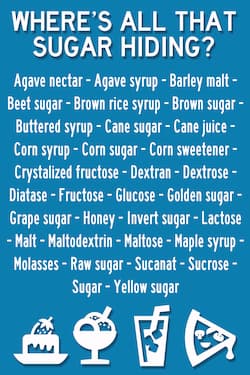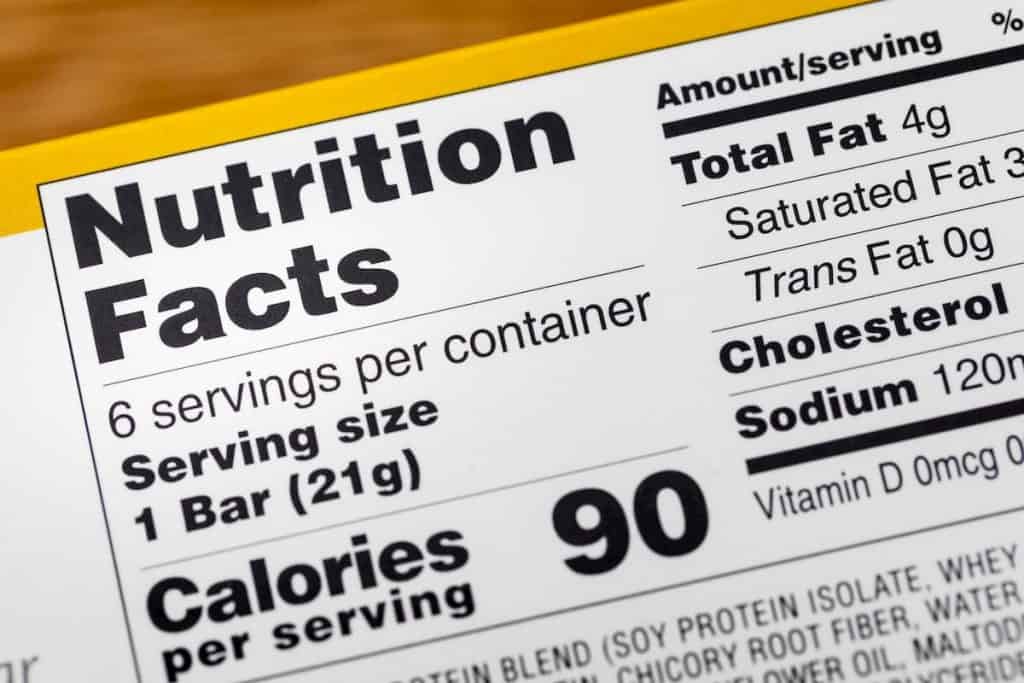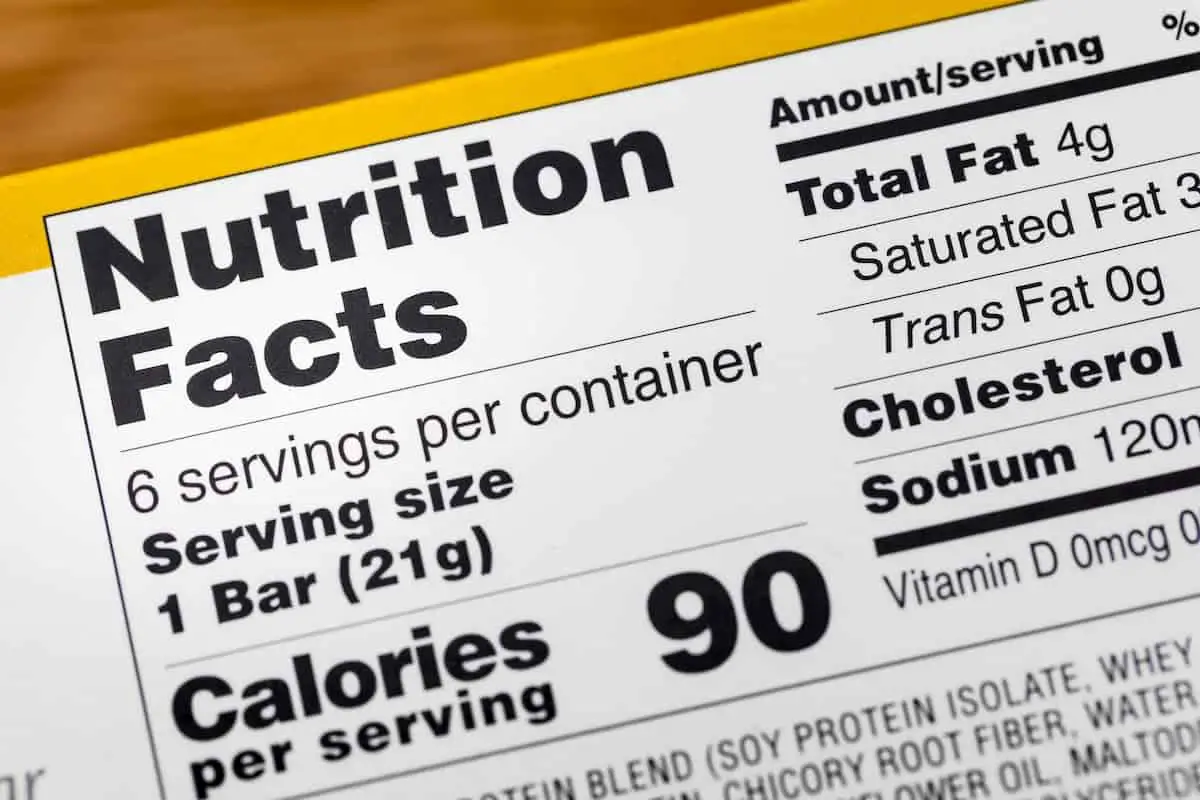This is something that has definitely caught me off guard on occasion and I always have to keep an eye towards it. Over time I have developed a better understanding and radar to foods that contain more carbohydrate volume than I anticipate.
Things like cinnamon that I loved to have have a much larger carbohydrate hit then I expected, Keto will definitely teach you how to read and learn more about your foods.
What Are Possible Hidden Carbs In Keto Diet Foods? They are most frequently the carbs that are rounded off on labelled product nutrition information. They are also contained in the spices and sauces you use in cooking and preparation of foods. Debate on this topic also concerns “net carbs” versus “total carbs”.
Lets go ahead and dive deeper into hidden carbs and what you can do to start learning where and how they exist. This should help grow your understanding and ensure that you make proper food choices with your health as the deciding factor.
Carbohydrate Tracking Basics

As someone new to Keto you may have heard that you must limit your intake of carbohydrates. The reason this is necessary is to force your body to burn fat (plate and body) in place of carbohydrate and glycogen.
If you consume too many carbohydrates they are toxic to keep in the blood so your body starts the process to launch insulin and eliminate the blood sugar response and store/use what is necessary to get it to a controlled level in your blood stream.
So if you keep your carbohydrate level low your body will delve into the stored body fat or ingested fat to make use of the long term energy source. If you should ingest too much carbohydrate again your body will jump back to manage the blood sugar immediately.
What Is “Total Carbohydrates”
This means all the carbohydrates within a food, this is all the sugar, fiber and starches listed for a given food, whether on the nutrition label or on the US FDA site for meats and vegetables.
This is the most straightforward way to track as it requires no funky math or counting skills to keep track of. If your food is listed as 13 carbs then you would track 13 carbs out of your allotment for the day.
I personally prefer this method and I have through time and patience seen that I can still continue to lose body fat while around 50g of carbohydrate or less. This was much more simple then the typical Facebook group saying less than 20g of “net carbs”.

What Is “Net Carbohydrates”
Net carbohydrates is a simple mathematical formula of total carbs minus fiber. Over time this has been stretched to include sugar alcohols and other sugar substitutes.
The issue with this is each person responds differently to sugar alcohol consumption. Each type of sugar alcohol can cause a different reaction for each person. So if you are OK with one you may not respond positively to another type.
In the end this is why I stopped tracking my carbohydrates in this manner. When I track total carbohydrates I have less issues with stalls which I think means that when you track “net carbs” you tend to intake more overall carbohydrates then your body is handling well.
What Is Fiber And Why Is It A Carbohydrate?
Dietary fiber is part of a plant-based nutrient that is called by some “roughage”. Fiber is a form of carbohydrate that cannot be broken down into digestible sugar molecules. Since it isn’t broken down into sugars fiber pretty much passes through the intestinal tract pretty much unprocessed.
Dietary fiber as it is commonly called is the indigestible portions of the plant fibers consumed. Fiber is believed to help digestion and help keep you regular, though most of that research has only been while on a Standard American Diet (SAD).
What Is Soluble Fiber?
Soluble fiber, such as pectin, gum and mucilage, dissolve in water and within the body, it dissolves and becomes a gel-like substance. Soluble fiber has been shown to help decrease blood sugar levels and help lower blood cholesterol levels.
Good Keto Sources Of Soluble Fiber:
- Nuts (Varied)
- Blueberries
What Is Insoluble Fiber?
Insoluble fiber, such as hemicellulose, cellulose and lignin, does not dissolve in water and mostly retains its shape while in the body. Insoluble fiber helps to speed up the passage of foods through the digestive system which helps maintain regularity and prevent constipation.
Good Keto Sources Of Insoluble Fiber:
- Nuts (Varied)
- Cauliflower
What Are Sugar Alcohols Listed Under Carbohydrates?
Sugar alcohols come from plants such as fruits and berries. The carbohydrate in these plants is chemically altered. These sugar substitutes are able to provide fewer typical calories than standard sugar.
This is mainly because sugar alcohols while not well absorbed providing a less insulin spiking effect are also known to sometimes carry with them a laxative effect.
Many foods which are labeled “sugar free” or “no sugar added” in fact are typically utilizing sugar alcohols. People many times think that foods labeled as “sugar free” or “no sugar added” have no effect on their blood glucose.
Unfortunately, food which contains these sugar alcohols need to have their calorie and carbohydrate contents accounted for in the meal plans, as they are carbohydrate which can raise blood glucose levels.
If you then overeat “sugar free” or “no sugar added” foods you could see your blood glucose significantly elevate and consequently see your blood ketone levels drop fast.
Under The Radar Carbohydrates In Sauces And Spices
One seriously hidden carbohydrate bandit is within your spice and sauce use. Many of these spices never even have a nutrition label leading people to believe they are a 0.
Once I started to investigate and learn more I found out that this is a culprit in over consumption of carbohydrates that many never track leading to issues maintaining Ketosis. Below we will go into some examples which will make you want to pay more attention next time you cook!
What Spices Have Carbohydrates?
There are numerous, frequently used, spices which have high mounts of carbohydrates in them which people don’t typically know. This can lead to some sever carb creep in your diet leading to delayed fat loss and the dreaded “stalls”.
Below you will find some of the most common incidental Carb spices: (Measurements below in Tablespoons)
- All spice (ground) = 4.3 -1.3 fiber = 3.0 net carbs
- Black pepper = 4.41 carbs – 1.7 fiber = 2.71 net carbs
- Caraway seed = 0.8 net carbs
- Cardamom ground = 2.4 net carbs
- Cayenne pepper = 1.6 net carbs
- Chili powder has 1.1g of fat, 1.1g of protein, and 4g of carbs (2.8g is fiber, 0.6g is sugar). So 1.2g NET.
- Cinnamon = 6.2 carbs – 4.1fiber = 2.1 net carbs sugar .17g
- Cloves = 4.2 carbs – 2.2 fiber =2 net carbs .15 sugar
- Corriander = 0.6 net carbs
- Cumin (ground) = 2.1 net carbs
- Curry powder = 1.6 net carbs
- Dried basil = 2.15 carbs – 1.7 fiber = 0.8 net carbs
- Dried parsley = 0.3 net carbs
- Dried spearment = 0.3 net carbs
- Fennel seed = 0.7 net carbs
- Fresh pepperment for 2 tbsp = 0.2 net carbs
- Garlic (ground) = 5.3 net carbs
- Ginger ground = 3.7 – .7 fiber = 3.0 net carbs
- Imitation vanilla extract = 0.3 net carbs
- Mace ground = 1.6 net carbs
- Mustard seed ground = 1.77 carbs – .8 fiber = 1.97 net carbs
- Nutmeg = 2.0 net carbs
- Onion Powder = 5.2 net carbs
- Oregano (ground) = 1.2 carbs – .8 fiber = 0.4 net carbs
- Paprika = 1.2 net carbs
- Poppyseeds = 1.2 net carbs
- Poultry Seasoning = 2.0 net carb
- Pumpkin Pie Spice = 3.8 carbs – .8 fiber = 3.0 net carbs
- Sage (ground) = 1.2 carbs – .8 fiber = 0.4 net carbs
- Savory = 3 carbs – 2 Fibers = 1 Net carb
- Parsley
- Sage
- Rosemary
- Thyme
- Marjoram
- Tarragon (ground) = 2.0 net carbs
- Thyme (ground) = 1.1 net carbs
- Vanilla extract = 1.6 net carbs
- White pepper = 4.9 carbs – 1.9 fiber = 3.0 net carbs
What Sauces Have Carbohydrates?
The most frequently used sauces in America has got to be ketchup and possibly followed closely by BBQ sauce. Most people don’t realize those 2 sauces are over 50% sugar in most cases with normal store bought versions.
Another source that can be very high but that is not acknowledged much is salad dressing as many versions of them have a large amount of sugar included. Typically you are more safe keeping to Caesar or Ranch if you are ok with the bad quality oils contained.
Carbohydrate Content Of Meats And Dairy
The last area of hidden carbohydrates that I wanted to cover with everyone is actually meats and dairy. Most people don’t think that meats especially can contain a decent amount of carbohydrates.
You may not believe it but many meats can have 1-3g of carbohydrates in a slice of ham or even bacon. That seems small but 2 slices would mean you would have consumed a decent volume of your daily carb intake.
Carbohydrates Contained in Meats
Meat is frequently discussed as a protein but it always contains some fat and carbohydrates. This means if you aren’t really tracking meat consumed and portion size of the meat you can have serious carb creep without actually knowing.
You will want to pay special attention to the processed meats more than the steaks, the ham and other lunch meats can contain a lot of sugar in the process to create. Bacon is a big one for having sugar within the ingredients and need to have tracked to ensure you aren’t eating far more carbohydrate then expected or believed.
Carbohydrates Contained In Dairy Products
Dairy meanwhile is known that it has carbohydrate content but many don’t realize how much difference can happen between shredded and sliced versus whole block cheese, low-fat and high-fat, and more. Make sure when you are looking for cheeses you choose high-fat, blocks of cheese and skip the low-fat and shredded cheeses.
The reason shredded cheese is dangerous is that they use starches to stop the cheese shreds from sticking together and since it is a small number it doesn’t typically get represented on the nutrition label.
Final Thoughts About Hidden Carbs In Keto Diet Foods
For many trying to manage their carb intake is easier than managing their overall intake of calories. Hidden carbs though can add up to serious additional calories and possibly cause your diet to implode.
I know that was a lot of details on carbohydrates seeing as we are always trying to limit our carbohydrate intake but this is necessary. I would rather give you too much to think about then too little. Feel free to bookmark this to come back and review if it will help.
If this was helpful please share it to people who could use the information I would appreciate it! Otherwise comment below and tell me anything I get incorrect or that I could add to help other people learn more!
Want Grass Fed Beef? Get ButcherBox Now
I was searching around by my house to find quality grass-fed beef along with heritage pork as I love the taste. Unfortunately, farmers’ markets failed me and I found ButcherBox.
It is now almost 3 years later and I still receive my ButcherBox monthly I get a mix of all three items but have added bacon and sausage into each additionally to give me a strong pork option that is from heritage hogs.





